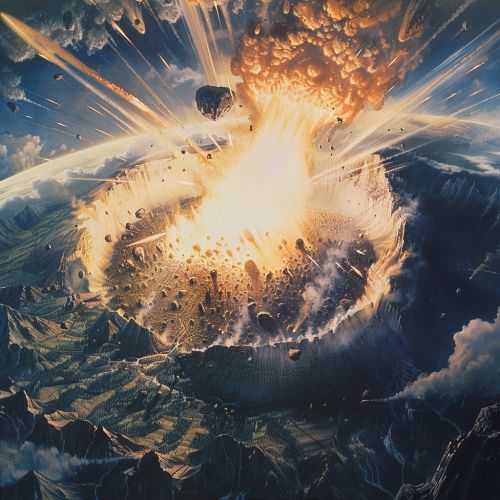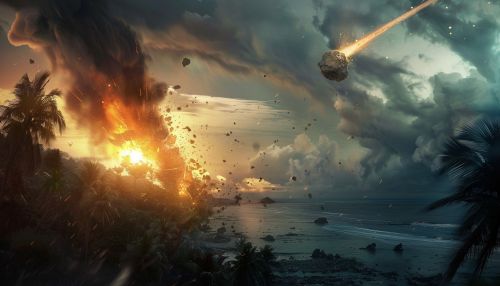Cretaceous–Paleogene extinction event
Introduction
The Cretaceous–Paleogene extinction event (K–Pg event), also known as the Cretaceous–Tertiary (K–T) extinction, was a sudden mass extinction of some three-quarters of the plant and animal species on Earth, approximately 66 million years ago. With the exception of some ectothermic species such as the leatherback sea turtle and crocodiles, no tetrapods weighing more than 25 kilograms (55 lb) survived. It marked the end of the Cretaceous period and with it, the entire Mesozoic Era, opening the Cenozoic Era that continues today.


Causes
In the geologic record, the K–Pg event is marked by a thin layer of sediment called the K–Pg boundary, which can be found throughout the world in marine and terrestrial rocks. The boundary clay shows high levels of the metal iridium, which is rare in the Earth's crust but abundant in asteroids.
Impact Hypothesis
The Alvarez hypothesis, widely accepted as the most plausible explanation, posits that the mass extinction resulted from the impact of a large asteroid or comet on the Earth. The hypothesis is named after the father-and-son team of scientists Luis and Walter Alvarez, who first suggested it in 1980.
Deccan Traps Volcanism
An alternate hypothesis, originally proposed by Dewey McLean, suggests that the K–Pg extinction was caused by the Deccan Traps volcanic eruptions in what is now India. Large-scale volcanism could have led to a "nuclear winter" scenario, similar to the Alvarez impact hypothesis.
Consequences
The K–Pg extinction had a profound effect on the evolution of life on Earth. The elimination of large, terrestrial animals altered the distribution of ecosystems, allowing new groups to evolve. In the oceans, the extinction of large marine animals led to the evolution of modern, smaller marine fauna.
Recovery and Radiation
Life on Earth took a long time to recover from the environmental disruptions which likely lasted for thousands of years after the K–Pg event. The Chicxulub crater, in the Yucatán Peninsula of Mexico, is the impact crater associated with the K–Pg event. The recovery of life forms was relatively fast on a geological scale, but slow by human standards.
